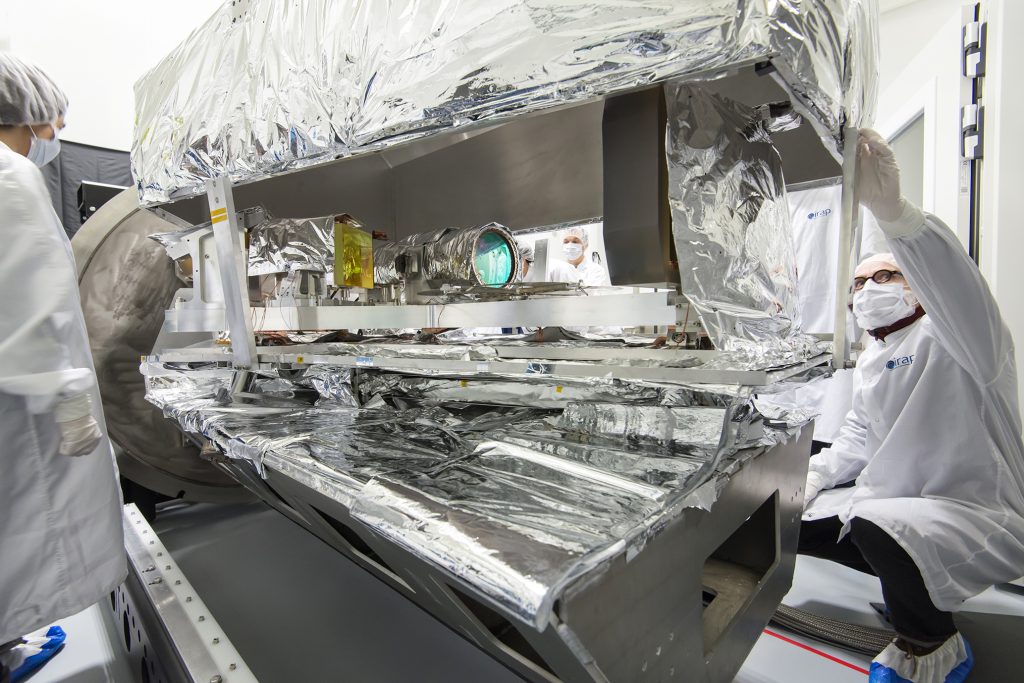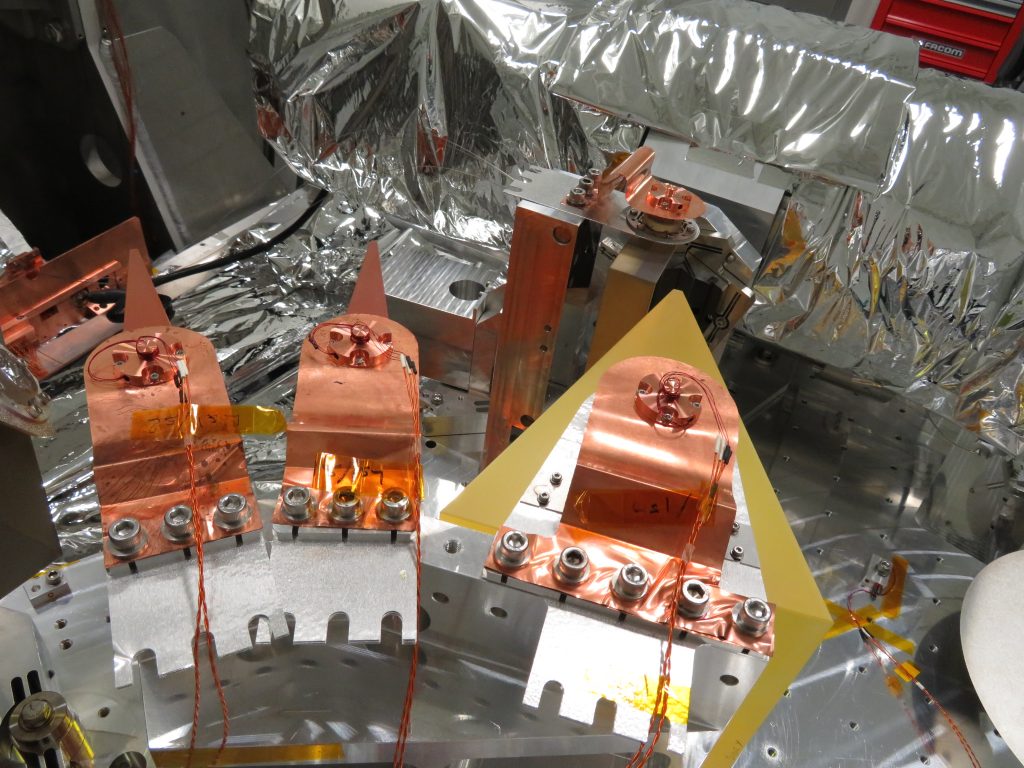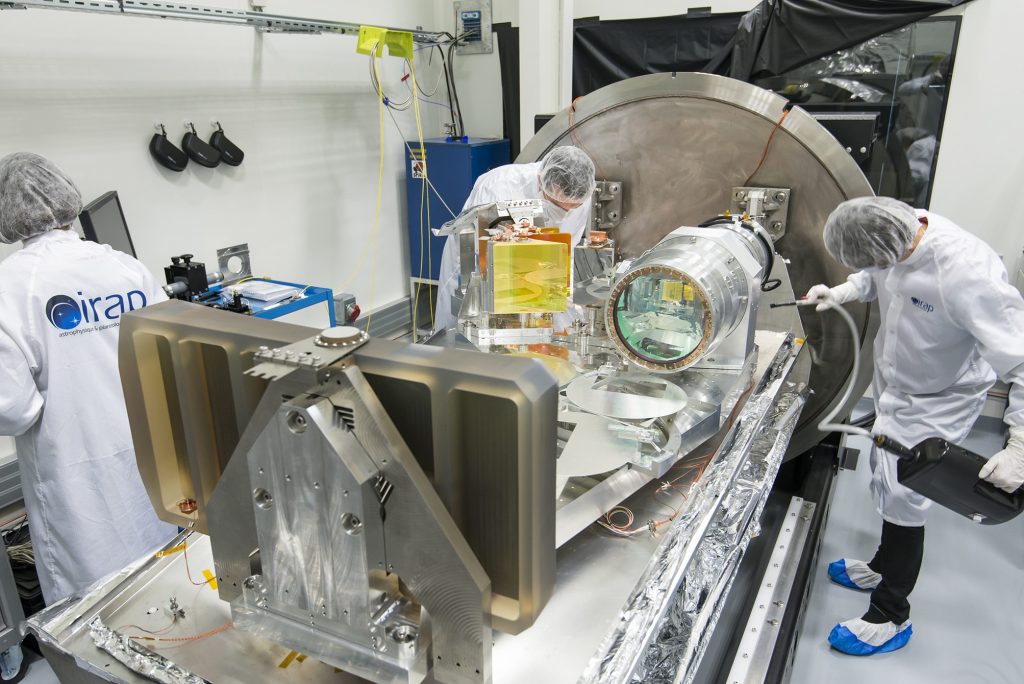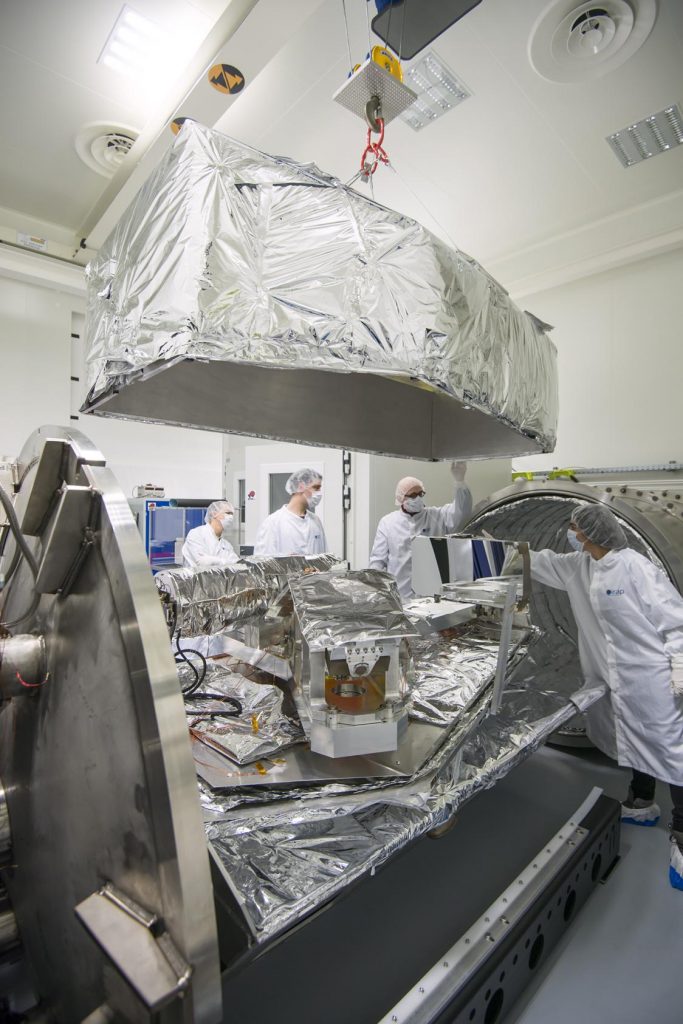2017 March: New cooling cycle for SPIRou
The full SPIRou spectrograph initiated a new cryogenic cycle
Following the delivery of the camera and of the test H2RG detector at IRAP/OMP, the now-complete SPIRou spectrograph was prepared for a new cooling cycle, the first one featuring the whole pre-aligned optical train.

SPIRou includes in particular the pupil slicer whose octagonal fibers can be fed from the calibration unit through three hermetic feedthroughs, and thanks to which we are able to send light (from halogen or hollow-cathode lamps) into the cryostat. Different temperature probes were also bonded and connected on each optics to monitor their cooling behavior and compare them with theoretical expectations from the SPIRou thermal model.
During this cooling cycle, SPIRou will collect its first lab images with the test H2RG detector. It will allow us in particular to assess the current status of the optical alignment and focussing, from which we will work out the corrections needed to bring SPIRou close to focus during the next cooling cycle. We will verify whether the thermal contraction of the optical bench and camera, as well as the refraction indexes of the various glasses (prisms, camera lenses), evolve with temperature as expected from our thermal and optical models. All components were wrapped with multi-layer insulation (MLI) to minimize thermal coupling with the warm outer dewar structure.
This instrument preparation was performed by the IRAP/OMP team, assisted by Vlad Reshetov from NRC-H (Canada) who designed the instrument cryo-mechanics and supervised the instrument pre-closure operations, and Philippe Vallée from UdeM (Canada) who participated to the camera integration at UdeM and installed the detector on SPIRou at IRAP/OMP.






